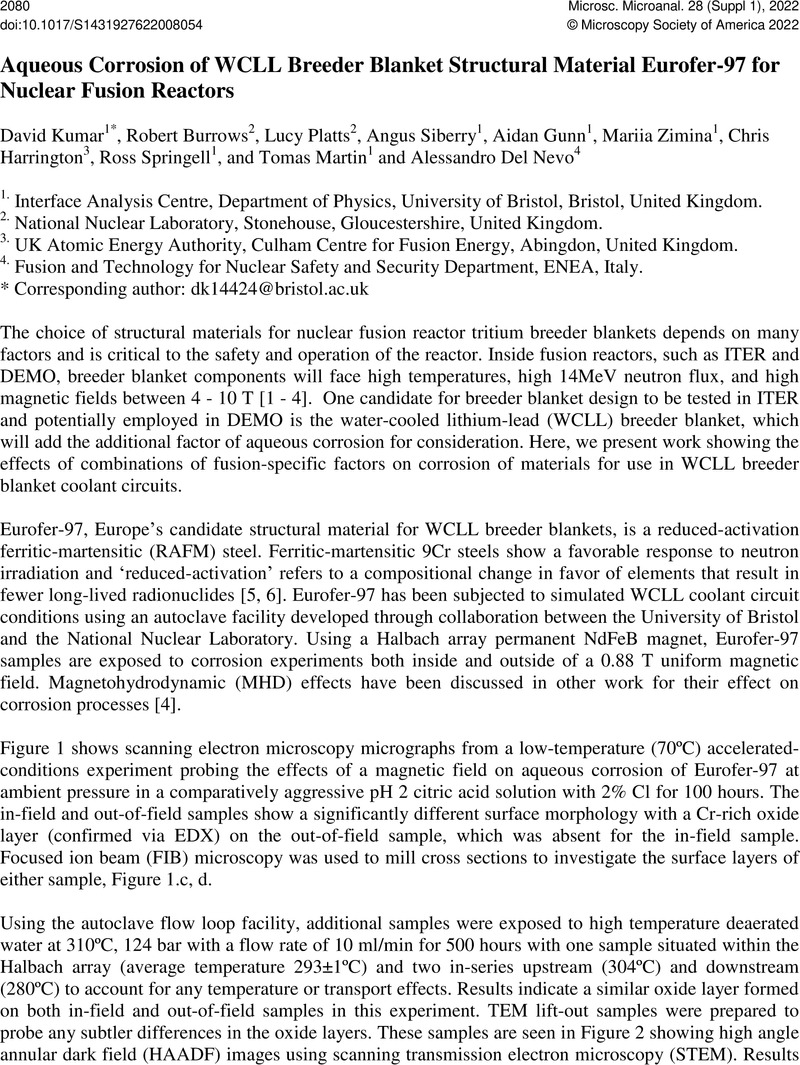No CrossRef data available.
Article contents
Aqueous Corrosion of WCLL Breeder Blanket Structural Material Eurofer-97 for Nuclear Fusion Reactors
Published online by Cambridge University Press: 22 July 2022
Abstract
An abstract is not available for this content so a preview has been provided. As you have access to this content, a full PDF is available via the ‘Save PDF’ action button.

- Type
- Correlative Microscopy and High-Throughput Characterization for Accelerated Development of Materials in Extreme Environments
- Information
- Copyright
- Copyright © Microscopy Society of America 2022
References
Kumar, D. et al. , Journal of Nuclear Materials 554 (2021), p. 153084. https://doi.org/10.1016/j.jnucmat.2021.153084CrossRefGoogle Scholar
R Aymar, ., Barabaschi, P., and Shimomura, Y., Plasma Phys. Control. Fusion 44 (2002), p. 519–565.CrossRefGoogle Scholar
Harrington, C. et al. , Fusion Engineering and Design 146 (2019), p. 478-481. https://doi.org/10.1016/j.fusengdes.2018.12.095CrossRefGoogle Scholar
R Burrows, . et al. , Fusion Engineering and Design 136 (2018), p. 1000-1006. https://doi.org/10.1016/j.fusengdes.2018.04.054CrossRefGoogle Scholar
Tong, Z., and Dai, Y.. Journal of Nuclear Materials 398 (2010), p. 43–48. https://doi.org/10.1016/j.jnucmat.2009.10.008CrossRefGoogle Scholar
Harries, D. R. et al. , Journal of Nuclear Material 191-194 (1992), p. 92–99. https://doi.org/10.1016/S0022-3115(09)80015-9CrossRefGoogle Scholar
Elements within this work have been carried out within the framework of the EUROfusion Consortium receiving part-funding from the Euratom research and training programme 2014-2018 and 2019-2020 under grant agreement No 633053 and from the RCUK [grant number EP/T012250/1]. The views and opinions expressed herein do not necessarily reflect those of the European Commission. Authors acknowledge the work of Dr C. Jones, Prof. D. Cherns, Dr I. Griffiths, and Dr J. C. Eloi in their FIB, TEM, STEM training and usage.Google Scholar





